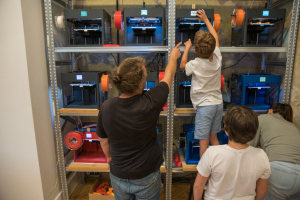Exploring 3D Printing: Resin vs. Filament
Exploring 3D Printing: Resin vs. Filament
When it comes to 3D printing, two primary technologies dominate the market: resin-based printing and filament-based printing. Each method has its unique strengths and weaknesses, catering to unique needs and preferences. In this blog post, we'll delve into the pros and cons of both resin and filament printing, helping you understand which option might be best suited for your projects.
Resin Printing: Precision and Speed
Resin printing, exemplified by Phrozen Resins, is renowned for its exceptional precision and speed. Using liquid resin cured by UV light, this method produces highly detailed prints with smooth surfaces. The curing process occurs layer by layer, resulting in faster printing times compared to traditional filament printers. Additionally, resin prints require minimal post-processing, making them ideal for intricate designs and rapid prototyping.
However, resin printing does have its drawbacks. The resin itself can be messy and requires careful handling due to its toxicity. The process also typically involves higher upfront costs for the printer and materials. Despite these challenges, the unparalleled speed and precision of resin printing make it a preferred choice for many professionals and enthusiasts alike.
Filament Printing: Versatility and Accessibility
Filament-based printing, on the other hand, offers versatility and accessibility. Utilising spools of plastic filament, such as PLA or ABS, filament printers can create a wide range of objects with varying properties. Filament printing is relatively straightforward and requires minimal setup, making it suitable for beginners and hobbyists. Additionally, filament printers are more forgiving in terms of ventilation and workspace requirements compared to resin printers.
However, filament printing has its limitations. The layer lines inherent in filament prints can result in less detailed and refined surfaces, making it less suitable for intricate models or prototypes. Additionally, post-processing may be more involved, requiring sanding and finishing to achieve desired results. Despite these challenges, filament printing remains popular for its accessibility and affordability.
Conclusion: The Future of 3D Printing
In conclusion, both resin and filament printing offer unique advantages and drawbacks. While filament printing provides versatility and accessibility, resin printing excels in precision and speed. As technology continues to evolve, resin printing is poised to become increasingly prevalent, particularly in professional settings where speed and detail are paramount. With advancements in resin formulations and printing technologies, the future of 3D printing undoubtedly lies in the realm of resin-based printing, offering unparalleled efficiency and quality for a wide range of applications.

